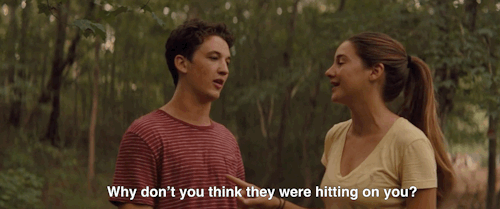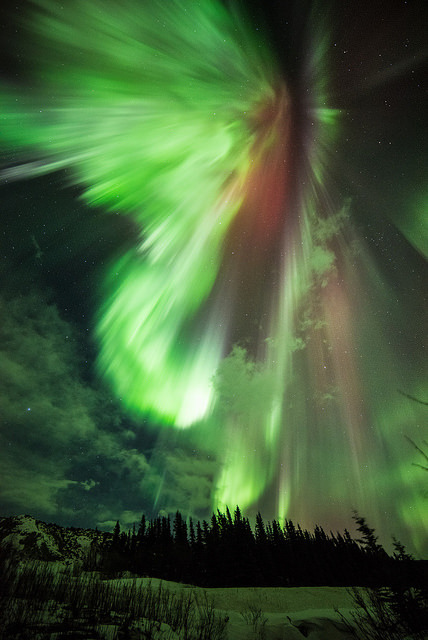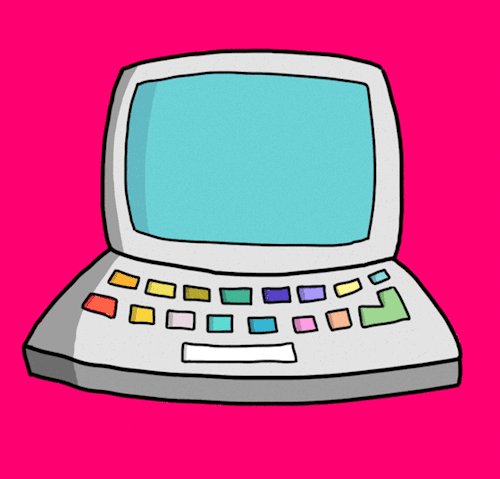6 Ways To Survive Parties As An Introvert
6 Ways to Survive Parties as an Introvert

There’s a reason why introverts aren’t usually particularly fond of parties—too much stimulation and small talk, but not enough authenticity and quiet. And yet, like most things in life, sometimes parties are inevitable. So, why do we do it? Why do we spend long Friday nights out feeling lonelier than when we’re alone? Because despite hating the peer pressure we face making bad decisions, we hate not participating even more. We hate not knowing. But there are ways to make good decisions and enjoy parties, rather than seeing them as mere social obligations. Psych2Go shares with you 6 ways to survive parties as an introvert:
1. Know when it’s worth it to go out.
It’s okay to be selective about which parties to attend. In fact, it’s smart to choose what works best for you. You don’t have to go to every event you’re invited to. It’s similar to dating. If we spent all our time trying to date everyone, it would lose meaning. We’re not compatible with every person that we meet, and the same applies to parties. It’s okay to skip out…
Continue Reading Here
More Posts from Karlfelersii and Others
Happy 4th of July… From Space!
In Hollywood blockbusters, explosions and eruptions are often among the stars of the show. In space, explosions, eruptions and twinkling of actual stars are a focus for scientists who hope to better understand their births, lives, deaths and how they interact with their surroundings. Spend some of your Fourth of July taking a look at these celestial phenomenon:

Credit: NASA/Chandra X-ray Observatory
An Astral Exhibition
This object became a sensation in the astronomical community when a team of researchers pointed at it with our Chandra X-ray Observatory telescope in 1901, noting that it suddenly appeared as one of the brightest stars in the sky for a few days, before gradually fading away in brightness. Today, astronomers cite it as an example of a “classical nova,” an outburst produced by a thermonuclear explosion on the surface of a white dwarf star, the dense remnant of a Sun-like star.

Credit: NASA/Hubble Space Telescope
A Twinkling Tapestry
The brilliant tapestry of young stars flaring to life resemble a glittering fireworks display. The sparkling centerpiece is a giant cluster of about 3,000 stars called Westerlund 2, named for Swedish astronomer Bengt Westerlund who discovered the grouping in the 1960s. The cluster resides in a raucous stellar breeding ground located 20,000 light-years away from Earth in the constellation Carina.

Credit: NASA/THEMIS/Sebastian Saarloos
An Illuminating Aurora
Sometimes during solar magnetic events, solar explosions hurl clouds of magnetized particles into space. Traveling more than a million miles per hour, these coronal mass ejections, or CMEs, made up of hot material called plasma take up to three days to reach Earth. Spacecraft and satellites in the path of CMEs can experience glitches as these plasma clouds pass by. In near-Earth space, magnetic reconnection incites explosions of energy driving charged solar particles to collide with atoms in Earth’s upper atmosphere. We see these collisions near Earth’s polar regions as the aurora. Three spacecraft from our Time History of Events and Macroscale Interactions during Substorms (THEMIS) mission, observed these outbursts known as substorms.

Credit: NASA/Hubble Space Telescope//ESA/STScI
A Shining Supermassive Merger
Every galaxy has a black hole at its center. Usually they are quiet, without gas accretions, like the one in our Milky Way. But if a star creeps too close to the black hole, the gravitational tides can rip away the star’s gaseous matter. Like water spinning around a drain, the gas swirls into a disk around the black hole at such speeds that it heats to millions of degrees. As an inner ring of gas spins into the black hole, gas particles shoot outward from the black hole’s polar regions. Like bullets shot from a rifle, they zoom through the jets at velocities close to the speed of light. Astronomers using our Hubble Space Telescope observed correlations between supermassive black holes and an event similar to tidal disruption, pictured above in the Centaurus A galaxy.

Credit: NASA/Hubble Space Telescope/ESA
A Stellar Explosion
Supernovae can occur one of two ways. The first occurs when a white dwarf—the remains of a dead star—passes so close to a living star that its matter leaks into the white dwarf. This causes a catastrophic explosion. However most people understand supernovae as the death of a massive star. When the star runs out of fuel toward the end of its life, the gravity at its heart sucks the surrounding mass into its center. At the turn of the 19th century, the binary star system Eta Carinae was faint and undistinguished. Our Hubble Telescope captured this image of Eta Carinae, binary star system. The larger of the two stars in the Eta Carinae system is a huge and unstable star that is nearing the end of its life, and the event that the 19th century astronomers observed was a stellar near-death experience. Scientists call these outbursts supernova impostor events, because they appear similar to supernovae but stop just short of destroying their star.

Credit: NASA/GSFC/SDO
An Eye-Catching Eruption
Extremely energetic objects permeate the universe. But close to home, the Sun produces its own dazzling lightshow, producing the largest explosions in our solar system and driving powerful solar storms.. When solar activity contorts and realigns the Sun’s magnetic fields, vast amounts of energy can be driven into space. This phenomenon can create a sudden flash of light—a solar flare.The above picture features a filament eruption on the Sun, accompanied by solar flares captured by our Solar Dynamics Observatory.
Make sure to follow us on Tumblr for your regular dose of space: http://nasa.tumblr.com
WHAT IS YOUR SOUL ELEMENT?

What is your soul element? Are you the master of fire, the controller of water, the bender of air, or the assembler of earth?
Take this test to know
The French Netflix uploaded this on twitter…….











For more posts like these, go to @mypsychology

Can we teach computers how to smell?
Researchers from IBM and Rockefeller University are trying to sniff out the answer. Smell may be the least understood of the five senses, so the team trained software to identify scents in order to learn more about how our brains perceive them. Their results prove for the first time that a scent can be predicted based on its molecular structure. Ultimately, as their database of scents grows, the predictions will become even more on the nose.
Learn how they did it →
Split brain does not lead to split consciousness
A new research study contradicts the established view that so-called split-brain patients have a split consciousness. Instead, the researchers behind the study, led by UvA psychologist Yair Pinto, have found strong evidence showing that despite being characterised by little to no communication between the right and left brain hemispheres, split brain does not cause two independent conscious perceivers in one brain. Their results are published in the latest edition of the journal Brain.

Split brain is a lay term to describe the result of a corpus callosotomy, a surgical procedure first performed in the 1940s to alleviate severe epilepsy among patients. During this procedure, the corpus callosum, a bundle of neural fibres connecting the left and right cerebral hemispheres, is severed to prevent the spread of epileptic activity between the two brain halves. While mostly successful in relieving epilepsy, the procedure also virtually eliminates all communication between the cerebral hemispheres, thereby resulting in a ‘split brain’.
This condition was made famous by the work of Nobel laureate Roger Sperry and Michael Gazzaniga. In their canonical work, Sperry and Gazzaniga discovered that split-brain patients can only respond to stimuli in the right visual field with their right hand and vice versa. This was taken as evidence that severing the corpus callosum causes each hemisphere to gain its own consciousness.
Divided perception
For their study, Pinto and his fellow researchers conducted a series of tests on two patients who had undergone a full callosotomy. In one of the tests, the patients were placed in front of a screen and shown various objects displayed in several locations. The patients were then asked to confirm whether an object appeared and to indicate its location. In another test, they had to correctly name the object they had seen, a notorious difficulty among spit-brain patients. ‘Our main aim was to determine whether the patients performed better when responding to the left visual field with their left hand instead of their right hand and vice versa’, says Pinto, assistant professor of Cognitive Psychology. ‘This question was based on the textbook notion of two independent conscious agents: one experiencing the left visual field and controlling the left hand, and one experiencing the right visual field and controlling the right hand.’
To the researchers’ surprise, the patients were able to respond to stimuli throughout the entire visual field with all the response types: left hand, right hand and verbally. Pinto: ‘The patients could accurately indicate whether an object was present in the left visual field and pinpoint its location, even when they responded with the right hand or verbally. This despite the fact that their cerebral hemispheres can hardly communicate with each other and do so at perhaps 1 bit per second, which is less than a normal conversation. I was so surprised that I decide repeat the experiments several more times with all types of control.’

(Image caption: A depiction of the traditional view of the split brain syndrome (top) versus what the researchers actually found in two split-brain patients across a wide variety of tasks (bottom). Credit: Yair Pinto)
Undivided consciousness
According to Pinto, the results present clear evidence for unity of consciousness in split-brain patients. ‘The established view of split-brain patients implies that physical connections transmitting massive amounts of information are indispensable for unified consciousness, i.e. one conscious agent in one brain. Our findings, however, reveal that although the two hemispheres are completely insulated from each other, the brain as a whole is still able to produce only one conscious agent. This directly contradicts current orthodoxy and highlights the complexity of unified consciousness.’
In the coming period, Pinto plans to conduct research on more split-brain patients to see whether his findings can be replicated. ‘These patients, who are rapidly decreasing in numbers, are our only way to find out what happens when large subsystems in the brain no longer communicate with each other. This phenomenon raises important questions that cannot be investigated in healthy adults because we have no technique to isolate large subsystems in healthy brains.’
Is Witchcraft a Placebo?
What is the “placebo effect” - a beneficial effect, produced by a placebo drug or treatment, that cannot be attributed to the properties of the placebo itself, and must therefore be due to the patient’s belief in that treatment
One of the hardest aspects of witchcraft is proving it actually works. When it comes to spell jars, sigils, and other energy type work the only proof we have of its abilities to actually do anything is our own experiences.
Think of it this way:
You create a spell jar to banish negative energy from your home. You’ve been having this feeling in your gut that something just isn’t right. When you come home you feel some sort of bad mojo around you.
So you put together a spell jar. You collect all your ingredients and you perform your spell. Everything went just as planned and you have your jar all finished. You decide to place it on your altar or maybe you choose to bury it in your yard, or place it somewhere hidden like a closet or dresser..
You start to feel a lightness surrounding you (like that heavy bad feeling is gone or at the very least, slowing dissipating). ~ it’s working ~ the spell is actually working…. or is it?
You’ve been told that this will banish the negative energy from your home and you believe it. So did a jar full of herbs, objects and whatever else you used actually banish the negative energy? Or did it work because you believed it would?
We’ve argued to a point of exhaustion about intent in witchcraft. “All you need is intent, everything else is just extra shit.” You ever wonder why witches tell you this? It’s because they have some awareness that all you need to do is believe it works and it’ll work.
I’m not one of these witches lol. I’m into science and hard facts. Which is probably why my craft mostly centers around herbalism (and the medicinal properties of herbs) but I do still use crystals, candles and I’m a tarot reader but that doesn’t mean I’m not self-aware. I understand that my craft will be questioned and what kind of witch would I be if I didn’t also question my own craft and how it works.
Of course I’m not saying magick isn’t real or that witchcraft is just made up bologna. I am a witch afterall lol. What I am saying is that witchcraft and the placebo effect are very similar.
There have been medical studies where they’ve found that more than 30% of those given a placebo reported the same results as those given the actual drug. This begs the question; are the active ingredients (or properties) in the drugs actually doing anything? or is the power of suggestion strong enough to mimic the results of the drug in question?
Thoughts?
-
 myheartmysoull liked this · 4 years ago
myheartmysoull liked this · 4 years ago -
 sexemese123 liked this · 5 years ago
sexemese123 liked this · 5 years ago -
 yusuf-krk liked this · 5 years ago
yusuf-krk liked this · 5 years ago -
 mynameisnotholly liked this · 5 years ago
mynameisnotholly liked this · 5 years ago -
 zombiemocional liked this · 5 years ago
zombiemocional liked this · 5 years ago -
 chloethebeautifulsoul liked this · 5 years ago
chloethebeautifulsoul liked this · 5 years ago -
 barnowlpinotma liked this · 5 years ago
barnowlpinotma liked this · 5 years ago -
 lilacs4amber liked this · 5 years ago
lilacs4amber liked this · 5 years ago -
 ghxvlnxxtdoor liked this · 5 years ago
ghxvlnxxtdoor liked this · 5 years ago -
 e30mike liked this · 5 years ago
e30mike liked this · 5 years ago -
 popper-piggy liked this · 5 years ago
popper-piggy liked this · 5 years ago -
 1harddog reblogged this · 5 years ago
1harddog reblogged this · 5 years ago -
 1harddog liked this · 5 years ago
1harddog liked this · 5 years ago -
 its-ritemeow liked this · 5 years ago
its-ritemeow liked this · 5 years ago -
 nyddles liked this · 5 years ago
nyddles liked this · 5 years ago -
 wolski99 reblogged this · 5 years ago
wolski99 reblogged this · 5 years ago -
 wolski99 liked this · 5 years ago
wolski99 liked this · 5 years ago -
 sirrealdude liked this · 5 years ago
sirrealdude liked this · 5 years ago -
 cassandrasummer liked this · 5 years ago
cassandrasummer liked this · 5 years ago -
 ravenclawsharknerdawkwardmess liked this · 5 years ago
ravenclawsharknerdawkwardmess liked this · 5 years ago -
 supreme-ruler-maud liked this · 5 years ago
supreme-ruler-maud liked this · 5 years ago -
 supreme-ruler-maud reblogged this · 5 years ago
supreme-ruler-maud reblogged this · 5 years ago -
 thenamesdede reblogged this · 5 years ago
thenamesdede reblogged this · 5 years ago -
 specialladyr reblogged this · 5 years ago
specialladyr reblogged this · 5 years ago -
 specialladyr liked this · 5 years ago
specialladyr liked this · 5 years ago -
 deedingdong liked this · 5 years ago
deedingdong liked this · 5 years ago -
 godsavethequeensdogs reblogged this · 5 years ago
godsavethequeensdogs reblogged this · 5 years ago -
 peculiarlylostdreamer liked this · 5 years ago
peculiarlylostdreamer liked this · 5 years ago -
 wolfshadow16 liked this · 5 years ago
wolfshadow16 liked this · 5 years ago -
 whimsicallyconfusedforlife reblogged this · 5 years ago
whimsicallyconfusedforlife reblogged this · 5 years ago -
 photographerjamie liked this · 5 years ago
photographerjamie liked this · 5 years ago -
 photographerjamie reblogged this · 5 years ago
photographerjamie reblogged this · 5 years ago -
 mikea-yvr liked this · 5 years ago
mikea-yvr liked this · 5 years ago -
 animal246 liked this · 5 years ago
animal246 liked this · 5 years ago -
 animal246 reblogged this · 5 years ago
animal246 reblogged this · 5 years ago -
 annoyeddddddbeannnnnnnnn reblogged this · 5 years ago
annoyeddddddbeannnnnnnnn reblogged this · 5 years ago -
 starryoong liked this · 5 years ago
starryoong liked this · 5 years ago -
 assert-your-fucking-dominance liked this · 5 years ago
assert-your-fucking-dominance liked this · 5 years ago -
 jasonstiff liked this · 5 years ago
jasonstiff liked this · 5 years ago -
 asahisbear liked this · 5 years ago
asahisbear liked this · 5 years ago -
 l10ng1rl liked this · 5 years ago
l10ng1rl liked this · 5 years ago -
 diary-of-an-equestrian liked this · 5 years ago
diary-of-an-equestrian liked this · 5 years ago -
 chicagobadman69 reblogged this · 5 years ago
chicagobadman69 reblogged this · 5 years ago -
 chicagobadman69 liked this · 5 years ago
chicagobadman69 liked this · 5 years ago -
 lieinyourvoice liked this · 5 years ago
lieinyourvoice liked this · 5 years ago










